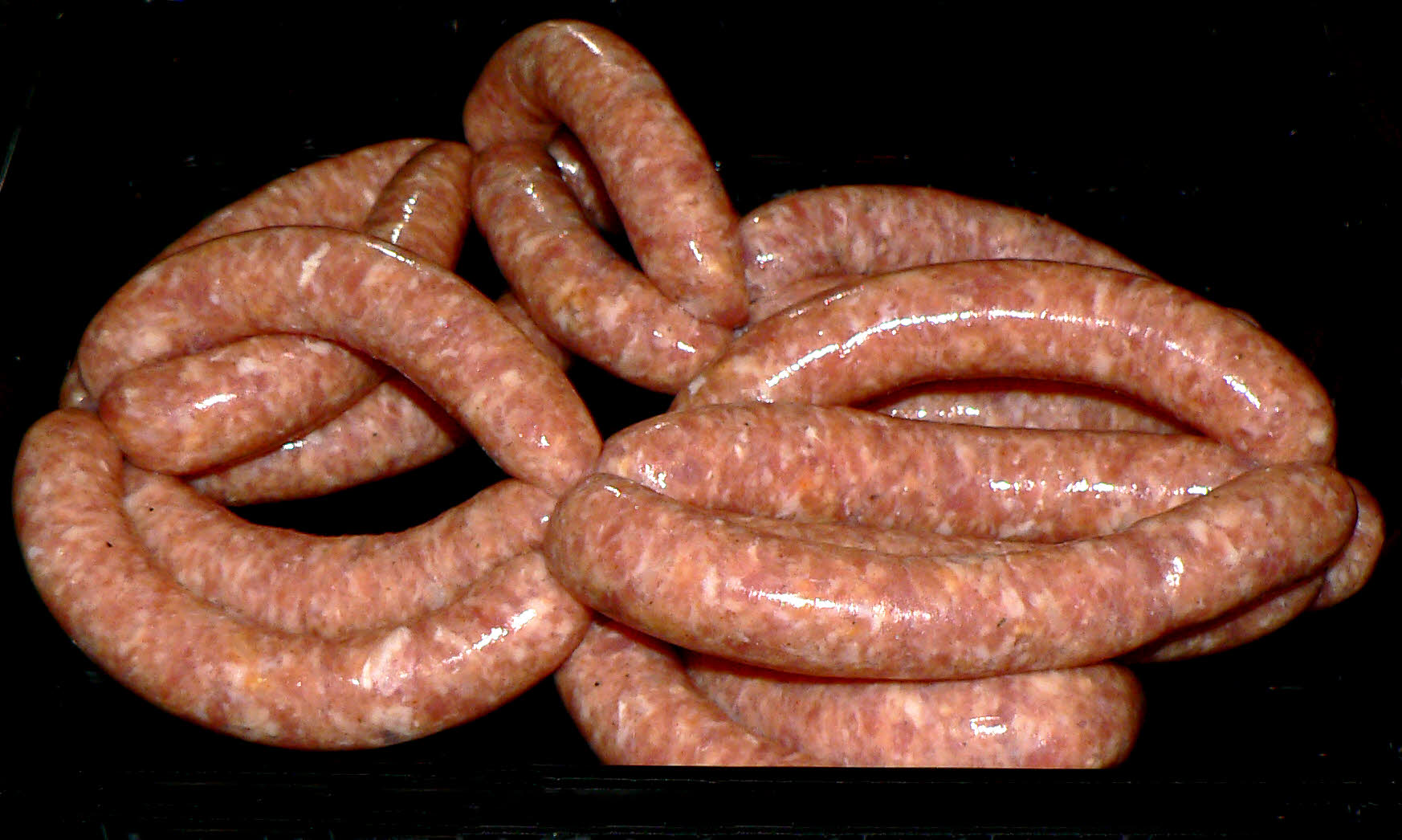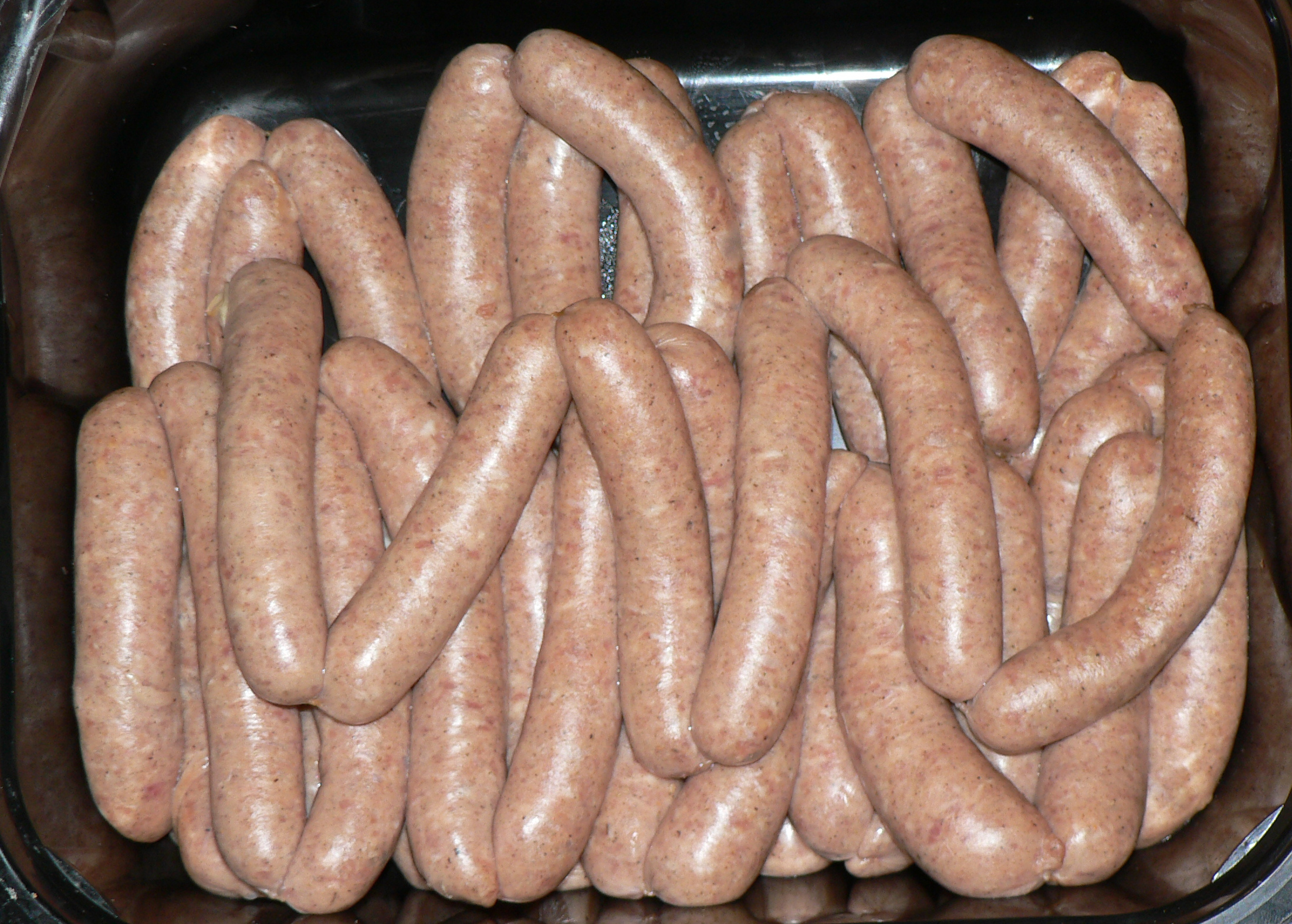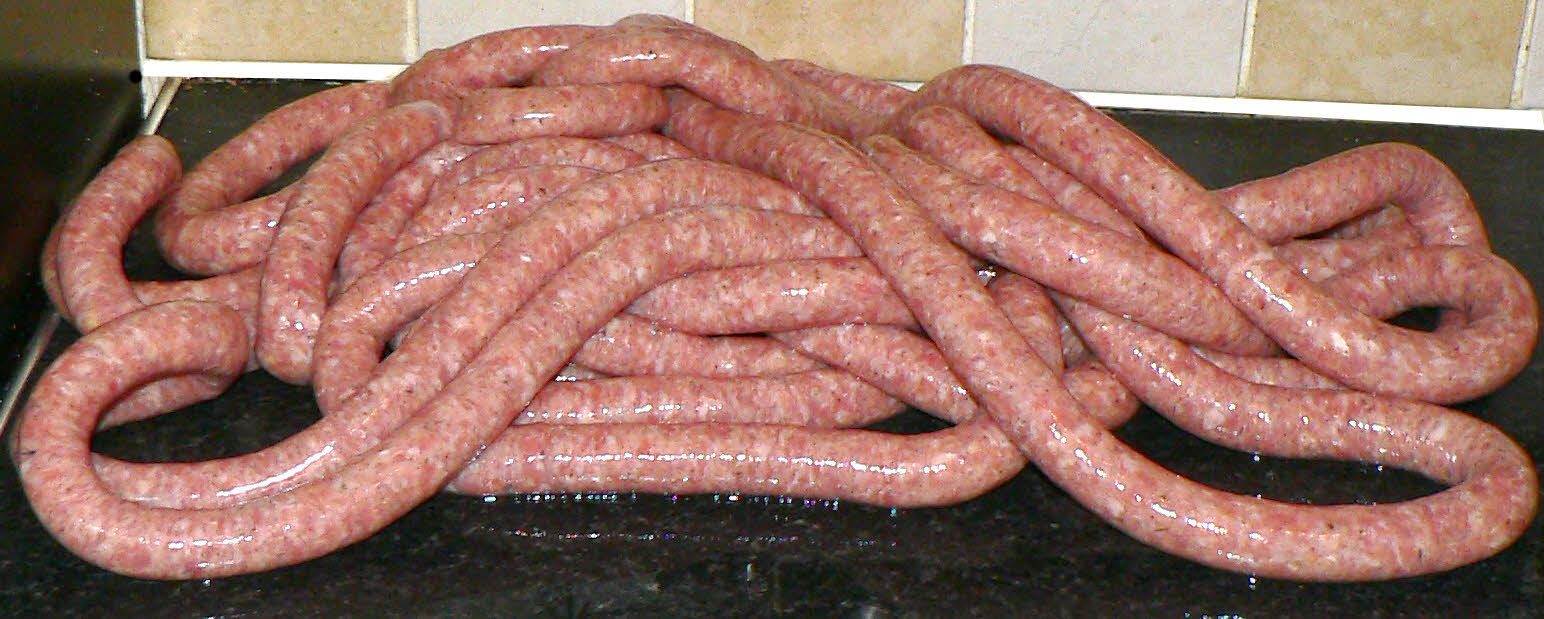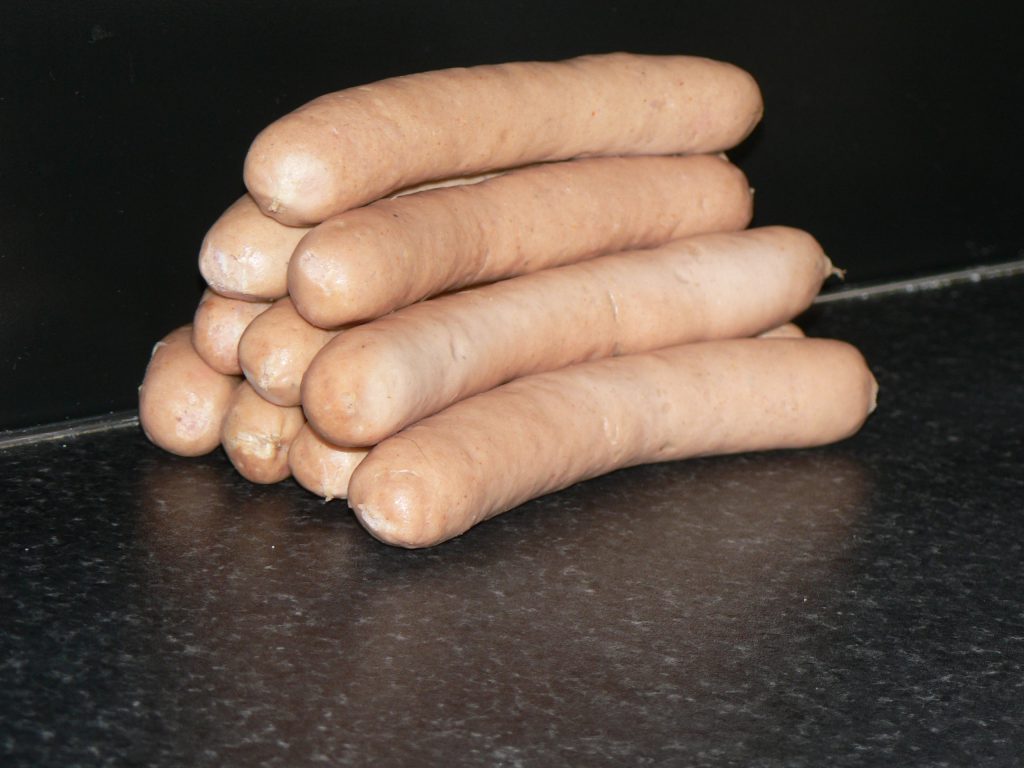Most British sausage contains some form of binder. Prior to WWII this was usually in the form of breadcrumbs but following the introduction of modern bread baking methods, most producers changed to using rusk. Good breadcrumbs from well-cooked homemade bread can still, of course, be used, or rusk can be bought online from suppliers such as Scobies or Weschenfelder.
Alternatively, you can make your own using this recipe which was posted by Parson Snows on the sausagemaking.org forum:
Rusk
500 g plain/all-purpose flour or bread/strong flour
pinch of salt
20g baking powder
250g water (approx)
Method
Preheat the oven to 450°F (230°C)
Sieve the flour, salt and baking powder together.
Mix it to a smooth, pliable dough using only enough of the water to do so.
Roll it out lightly to approximately ½” (12 mm) thick then place it on a lightly greased tray.
Place the tray into the oven on the middle shelf and bake for 10 minutes at 450°F (230°C).
Remove it from the oven and using the tines of a fork/or a large knife, split it in half along its thickness.
Place it back on the tray with the opened faces upwards.
Return it to the oven.
Reduce the heat to 375°F (190°C) and bake it for a further 10 minutes, or more until it seems dry.
Remove it from the oven and allow it to cool a little on a wire rack.
Whilst it is still warm, grind it in a food processor and then dry it further on trays until really dry.
Store it in an airtight container and use it as required.





